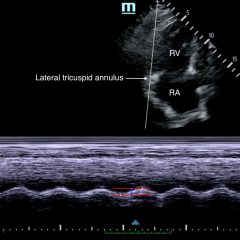Management of Wolff-Parkinson-White Tachyarrhythmia Presenting as Syncope with Seizure-like Activity
ABSTRACT:
Audience:
Emergency Medicine residents and medical students.
Introduction:
An estimated 3% of the United States population suffers from recurrent convulsive episodes that are most often attributed to primary epileptic seizures.1 However, recent studies have estimated about 20%-30% of such episodes are associated with occult cardiac etiology,2 which carry one-year mortality rates of up to 30%.3 Cardiogenic cerebral hypoxia has been associated with a wide variety of neurologic disturbances, including dizzy spells, headache, syncope, focal motor deficit, generalized tonic-clonic seizure, confusion, dementia, and psychosis.4 Convulsive activity has tentatively been ascribed to the ensuing activation of the medullary reticular formation.5,6 This scenario is based on a patient that presented to University of California Irvine Medical Center Emergency Department in April 2017 who, following witnessed seizure-like episodes, was diagnosed with underlying Wolff-Parkinson-White (WPW) disorder.
WPW is a congenital condition involving aberrantly conductive cardiac tissue between the atria and the ventricles that provides a pathway for a reentrant tachycardia circuit and ventricular pre-excitation.7 Diagnosis is primarily based on the presence of a short PR interval and delta waves on electrocardiography.8 While definitive treatment is catheter-based radiofrequency ablation of the accessory pathway, the hallmark of acute management is vagal maneuvers and antiarrhythmic drugs in the symptomatic but hemodynamically stable patient, and synchronized cardioversion in the unstable patient.9 WPW is thought to affect between 0.1% and 0.3% of the population, and while the usual clinical course is benign, sudden cardiac death occurs in about 3%-4% of such patients.7,10 One survey found 19% of patients with WPW had a history of syncopal episodes;11 however, precise prevalence surveys of WPW-associated seizure-like episodes are lacking in the current literature. This case illustrates the possibility of cardiogenic etiology underlying any convulsive or syncopal event, and thus the importance of its prompt detection and treatment.
Objectives:
At the end of this simulation session the learner will: 1) Recognize clinical history suggestive of cardiogenic syncope, 2) recognize clinical evidence of Wolff-Parkinson-White syndrome, 3) promptly and appropriately treat unstable WPW tachyarrhythmia.
Method:
Moderate-fidelity simulation.
Topics:
Seizure, arrhythmia, Wolff-Parkinson-White (WPW), simulation, cardiac electrophysiology, adult resuscitation.

